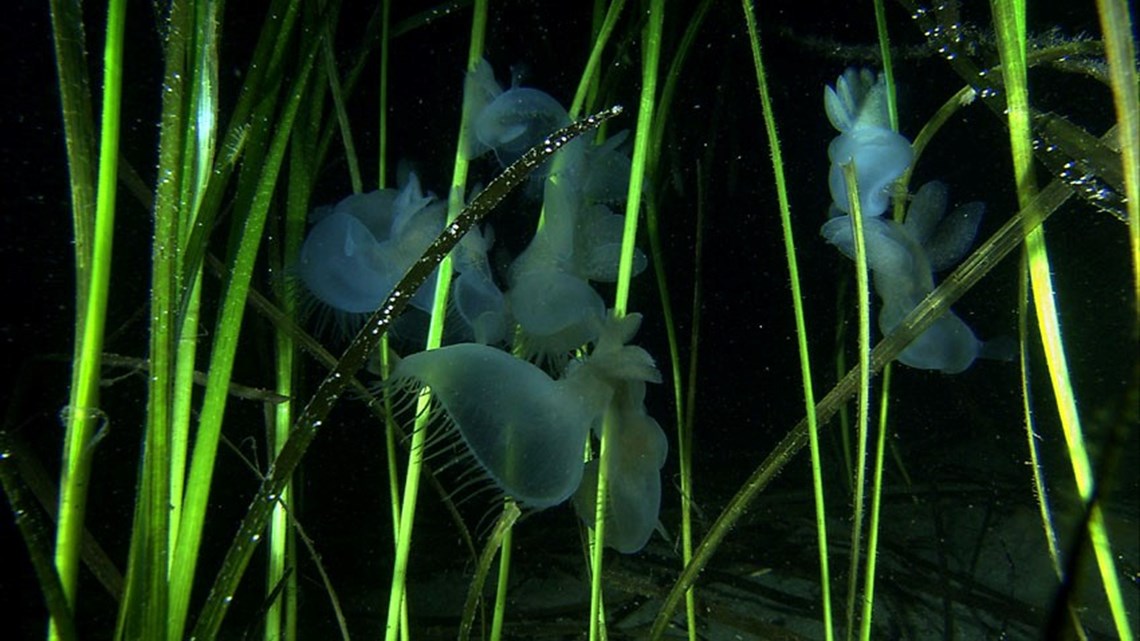Distribution
Eelgrass grows in the muddy or sandy substrate of the shallow sub-tidal zone, down to a depth of approximately 22 feet in the Northwest. Eelgrass grows throughout the Puget Sound, the Pacific and Atlantic Coasts, and in Europe. In Whatcom County, eelgrass is found along much of the shoreline, particularly near Point Roberts, Drayton Harbor, Birch Bay, Lummi Bay and around Portage Island.
Reproduction
Eelgrass commonly reproduces by means of vegetative propagation. In this type of propagation, the plant sends out rhizomes (horizontal, underground stems) that send up new shoots of eelgrass. In this way, eelgrass spreads quickly over a small area, just like the grass in our lawns. Eelgrass can also spread by seed, which is a slower method of reproduction but can broadcast offspring over a greater distance.

Ecology
Eelgrass provides valuable forage, spawning and refuge areas for a number of other marine species. Eelgrass fills an important function in the marine foodweb at two levels. Eelgrass is directly consumed by organisms such as waterfowl, urchins, worms, snails, and microorganisms. In addition, many other species (such as salmon, crabs, and heron) consume the organisms that live in the eelgrass colonies. Eelgrass provides a spawning habitat for Pacific herring, which lay their eggs on the blades of eelgrass. Eelgrass beds are also a critical nursery area for juvenile salmon and cod which seek protection within the beds from predators. Colonies of eelgrass provide a protected habitat for many marine species seeking refuge from potential predators. Eelgrass can also protect animals from overheating caused by exposure to solar rays in shallow water during low tides and in shallow areas. On tidelands, animals bury themselves underneath mats of eelgrass to avoid dehydration.
Economic Value
Eelgrass has historically been used for a variety of human needs such as food, basket weaving, compost, bedding, insulation and high-grade paper. Most industries stopped processing eelgrass in 1930-31 when the Wasting Disease nearly wiped out eelgrass populations along the Atlantic Coast of North America and Europe. One of the most important current economic values of eelgrass in Whatcom County is the habitat provided for salmon, herring and shellfish, which are or have been commercially harvested in Whatcom County.
Sources
- Washington State Dept. Ecology
- Port Townsend Marine Science Center
- Snohomish County MRC.